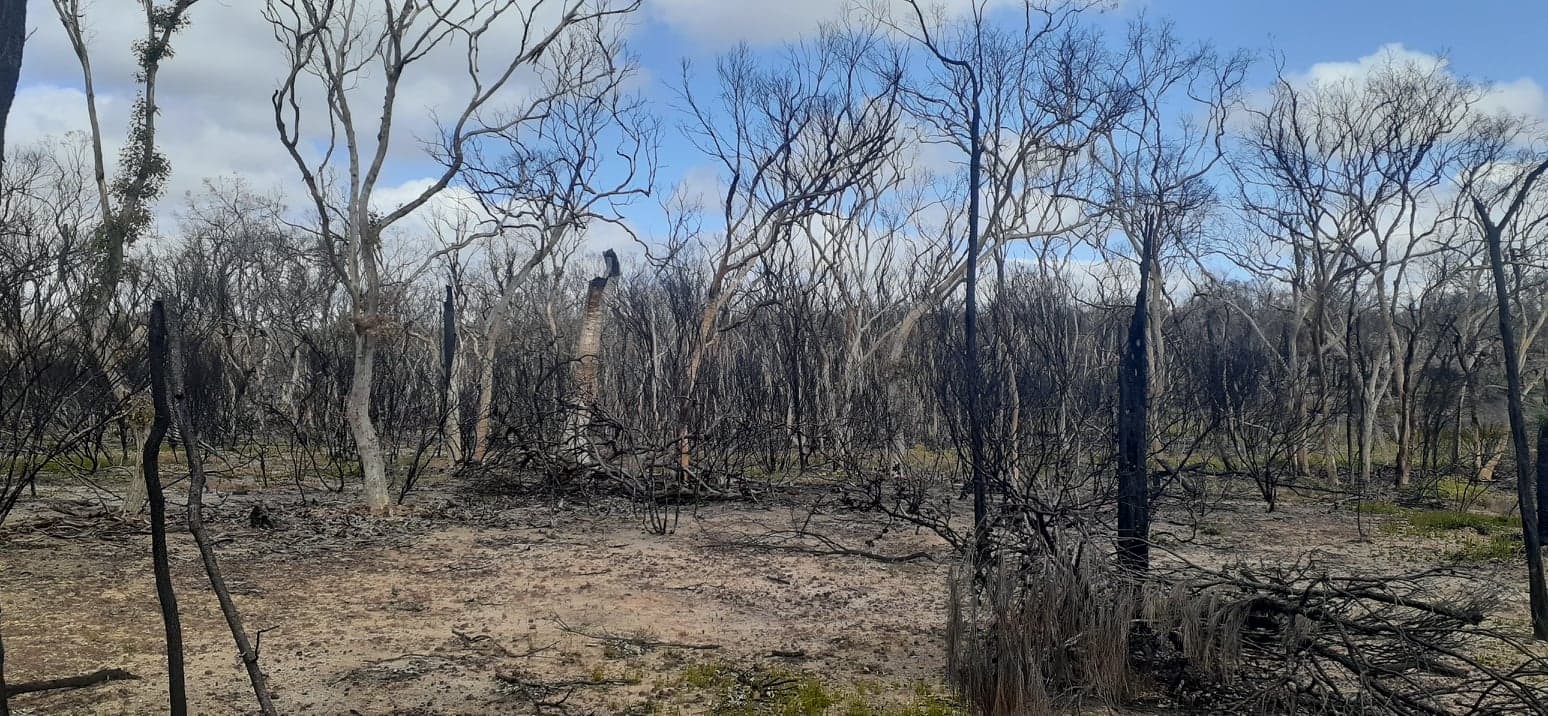Work is progressing on the first round of support to help farmers who lost remnant vegetation in the Wickepin and Corrigin fires last February. This round, the focus will be on protecting recovering remnant stands in cropping paddocks.
For mixed farming operations, grazing stubbles is an important feed source for livestock over the summer months. Some large paddocks across the landscape dedicated to crop have patches of remnant vegetation that have been fenced off to conserve highly valuable native ecosystems as well as protecting livestock from grazing any of the poisonous Gastrolobium species common to Western Australian bushlands.
With close to 50,000 hectares of farmland burnt in the two fires, remnants such as these have been taken out along with fencing that protects them.
Most native flora species in the Wheatbelt respond well to fire and it is an important part of seed germination and recruitment however, our bushland is adapted to regenerate after cool fire, not the hot fires seen last February. As a result, many remnants are struggling to come back, what regrowth exists is hence vulnerable to grazing pressure.
In a bid to help farmers get these recovering stands protected prior to livestock going onto stubble, we are racing against the clock to develop an equitable process for providing farmers with support for fencing.
If you have been affected by fire and have lost precious remnants, please look out for the announcement of round one Expressions of Interest in the coming month.
Wheatbelt NRM is partnering with CFIG and Facey Group to deliver the program over the next two years. Funding has been provided under the State NRM Community Stewardship Grant Program to support revegetation and re-fencing of previously protected remnant vegetation areas. In mid-2023 a second round aimed at biodiverse revegetation will be announced that will allow farmers to access support to restore remnants that have failed to recover or require in-fill planting.
Published eNews 374, November 2022


